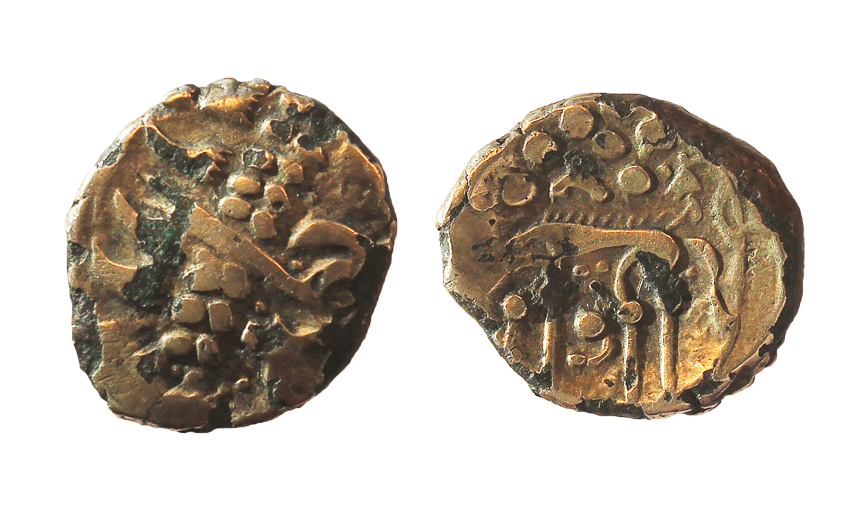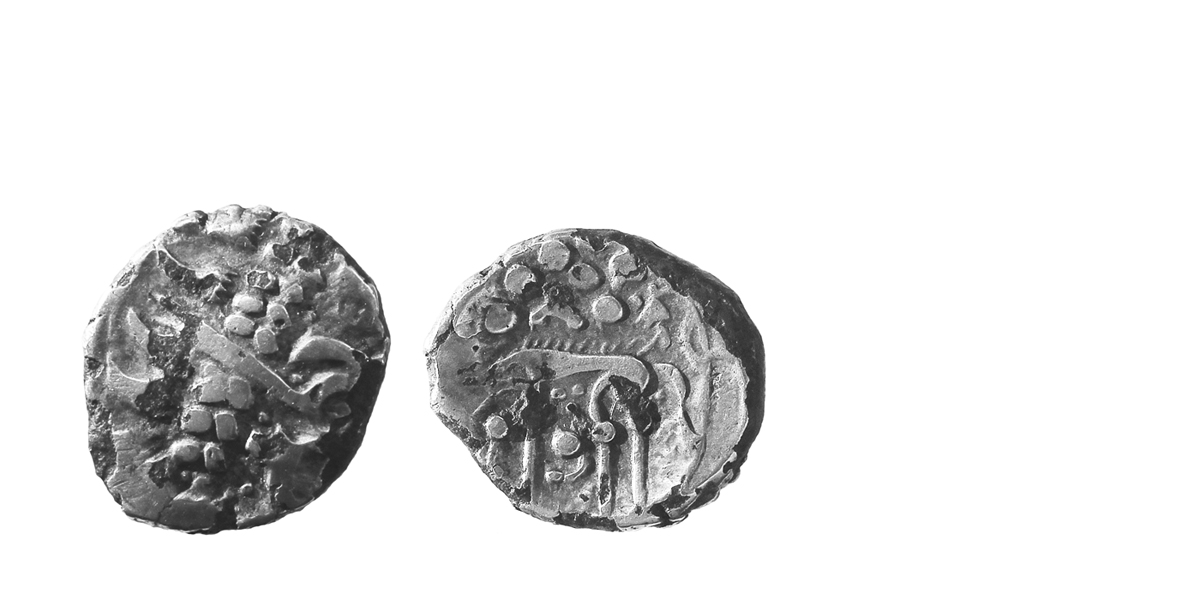
About the Coins
Manufacturing Methods (Info)
Ancient Forgeries
Plated gold staters and quarter staters
Forgeries of the gold staters are the commonest today. Being larger and coated with gold, a more resistant metal, they would tend to have a higher survival rate than the silver forgeries. The quarter staters are generally scarcer than the staters, so it is not surprising forgeries of them are correspondingly scarce.
Plated silver coins
The silver coins were also forged, but these are rare today. When they are found, they tend to be poorly preserved.
Flan production for forgeries
Copper cores of the right size were coated with gold alloy before striking. Coating after striking does not seem to be used, for the coating usually shows the effects of striking. Two methods were used to coat the flans, washing and foil-wrapping (110). In the first technique, the copper cores were dipped in molten metal to give them a thin wash of gold or silver. In the second method, a thin foil of the noble metal was wrapped around the core and beaten until it bonded. The second technique seems to be the one most commonly encountered in the Corieltauvian forgeries. There is some evidence today the Celts knew of the mercury-coating process for gold, though this has not been proven for the coins. Metallurgical studies of plated coins may identify its use in the future.
Forged die production
A find of a forged die has now been reported (158). The die production techniques seem to have been similar to those of the official mints.
It is also possible false dies were cast using genuine coins, or coins were pressed into soft-metal dies that were subsequently hardened.
Implications
The presence of forged coins suggests two things:
- Inflation was a problem in those cases where official mints may have produced the plated coins. Instead of debasing the entire flan, the gold alloy was devoted to the outside of the coin to make the piece more acceptable. The coating does not necessarily prove the intent to deceive, in these cases.
- The production of counterfeit coins by forgers indicates a money economy existed, one in which fraud was a problem. Measures against it were practiced, because many counterfeit coins have test cuts on the edges.
Next Section – Catalogue Organization

